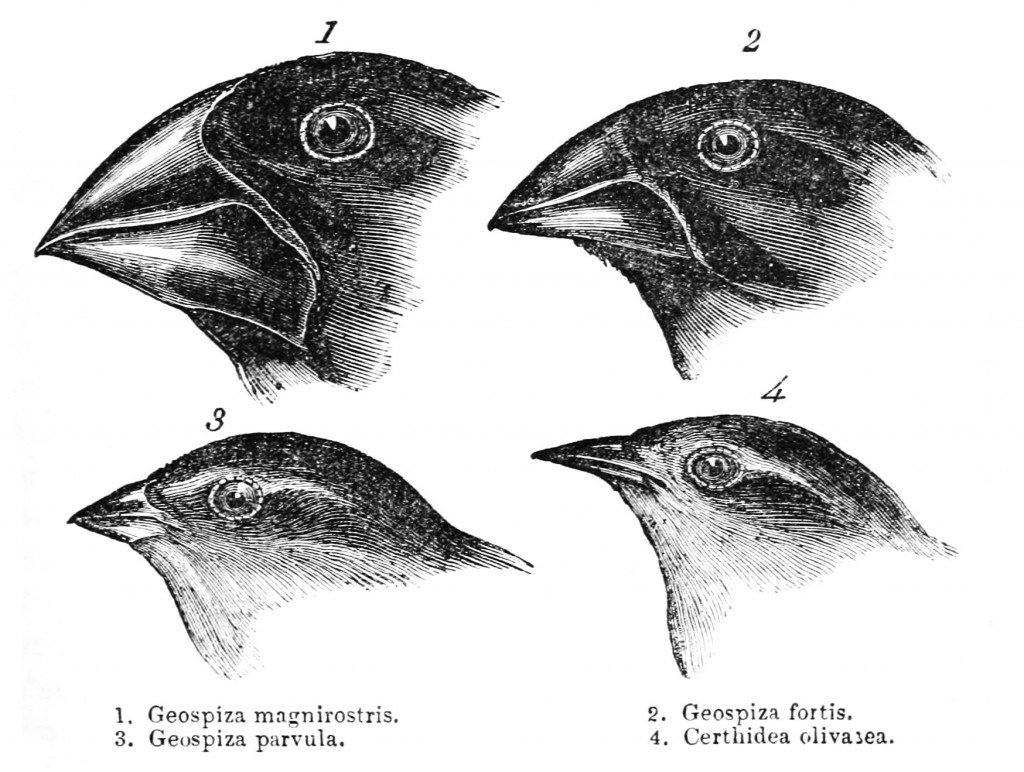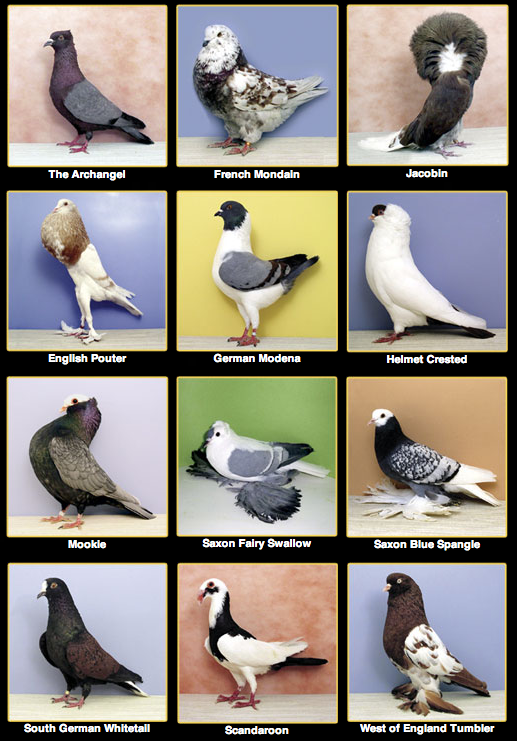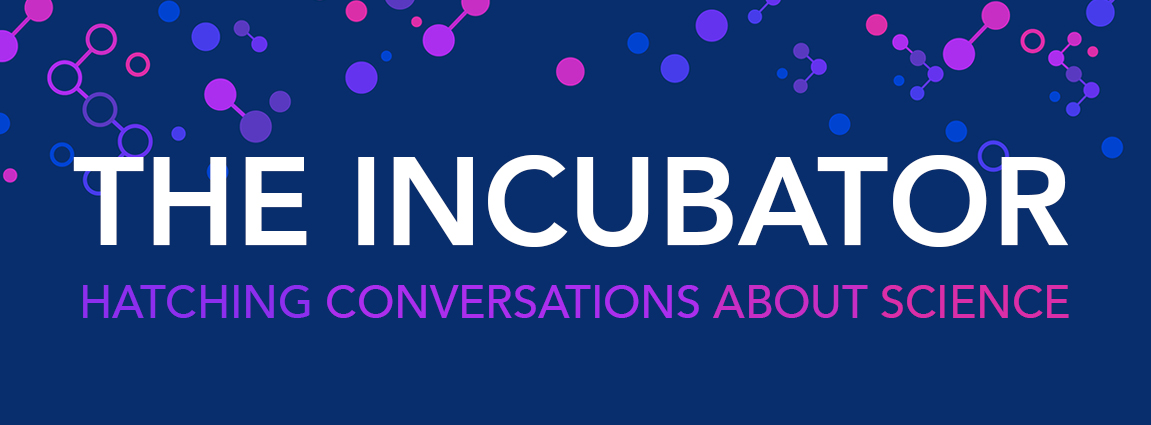Pigeons: Darwin’s Unappreciated Avian Assistant
By Michael Wheelock, @MSWheelock
The Fallacy of Finches
If I contribute as much to science as the pigeon has, I’ll consider my career an overwhelming success. Why? Because pigeons were instrumental in helping Darwin argue for evolution by natural selection.
“Wait a second Mike,” you might be thinking, “don’t you mean finches?”
Absolutely not, but I know where you’re coming from.
In middle school, I was taught that Darwin encountered finches (pictured below) while island hopping in the Galapagos, a series of volcanic islands off the coast of Ecuador.

Darwin noticed that on each island, the shape and size of finch beaks correlated with their available food sources. For example, short and stout beaks were well suited for eating seeds from the ground, whereas long, pointed beaks were ideal for eating fruits. This led him to speculate that all of the finches were derived from a single species that had traveled from mainland South America via wind, and adapted differently on each island over time. Ultimately, this inspired him to propose the idea of evolution by natural selection in his book On the Origin of Species, published in 1860.
Unfortunately, this story is a combination of misconceptions and mix-ups (I was a little surprised too). This topic has been discussed elsewhere, but here are a few key points:
- The word ‘finch’ only appears 3 times in The Origin (two of the times are simply comparing it to other birds). This is hardly inspirational, especially compared to the 112 mentions of ‘pigeon.’
- Darwin didn’t initially appreciate the differences in finch beak size. In fact, he thought some of the birds he caught weren’t finches at all! It was only after the ornithologist John Gould corrected the classification that Darwin could even begin to think of the birds as originating from a single species (turns out they were both wrong and the ‘finches’ are really tanagers).
- Even after realizing the differences in beak size, Darwin never attributed them to adaptation to different food sources. While he did state in his Journal of Researches that “one species had been taken and modified for different ends,” he never specified what those ends were.
- As Frank Sulloway has pointed out, work in the early 20th century, especially David Lack’s book Darwin’s Finches, “helped to crystallize the legend by blurring the crucial distinction between what was ‘Darwin’s’… and what was not.” Many details of the story attributed to Darwin are actually the work of subsequent scientists, including David Lack and Peter and Barbara Grant.
Thus, Darwin’s theory of evolution by natural selection wasn’t ‘inspired’ by finches. At best, these birds were a small part of a larger body of evidence that supported his theory. So if finches didn’t support Darwin’s theory in The Origin, what bird did?
The Genius of Pigeons
It was pigeons, not finches, that Darwin used to argue the plausibility of natural selection. The pigeon (better termed the Rock Dove) was domesticated by humans approximately 5,000-10,000 years ago, presumably as a source of food. Certain people – termed pigeon fanciers – began breeding these pigeons for aesthetic qualities. By the time Darwin became interested in them, there were several hundred varieties of domestic pigeon available. It’s hard to express with words how magnificent some of these pigeons are, so I’ve included a panel of different varieties below (some birds bear a striking resemblance to characters from the ‘Hunger Games’).

How can any of these birds possibly be the same species?
While some wild pigeons are different from each other in obvious ways (white feathers versus brown feathers), there are others that have more subtle or uncommon variations in traits such as color, plumage or flight pattern. Over the centuries, pigeon fanciers have ‘artificially selected’ and enhanced the aesthetic qualities they liked (head crests, acrobatic flight patterns, etc) by breeding together birds with similar traits. By selecting different traits in different individuals, fanciers were able to produce the staggering variety you see above.
Darwin believed that the ‘artificial selection’ of pigeon traits by humans was analogous to the ‘natural selection’ of animal traits by the environment. In nature, individuals within a species are different from one another. Those with a trait that increases their survival and/or reproduction are ‘naturally’ selected and have the chance to pass that trait on to the next generation. Repeated rounds of natural selection could enhance the frequency or extent of the selected trait over time. If individuals from the same species undergo selection for different traits, as might happen if they lived in different areas, they could eventually split into distinct breeds or species.
Darwin argued in The Origin that the diversity in domestic pigeons was produced over time by artificially selecting different traits within a single species, the Rock Dove. In doing so, he supported the idea that an analogous process of evolution could occur in the wild through natural selection on existing variation. If Darwin were alive today, he’d be happy to know that a recent publication in Science confirmed his belief that domestic pigeons were derived from the Rock Dove. The fact that scientists have continued to test – and validate – Darwin’s conclusions over the 150 years since The Origin was published speaks to the importance of his work and the ongoing influence of his legacy.
Sadly, the fallacy of the finch has overshadowed the genius of the pigeon for decades. So today, on Darwin’s birthday, let us cast aside our misconceptions and give due credit to a creature that, according to Darwin, is “the greatest treat…. [that] can be offered to a human being;” to the Rock Dove, to Coloumbia livia, to Darwin’s underappreciated avian assistant: the pigeon!
Other interesting links:
- Free access to many of Darwin’s publications
- Wikipedia has a wealth of information on Darwin’s life, the inception of his theory, the principles of evolution and the history of evolutionary thought .
- A site dedicated to Darwin’s pigeons, including pictures of the original specimens he breed and studied.
Michael Wheelock is a birder, basketball player, and graduate student at The Rockefeller University. Catch him on twitter @MSWheelock and follow his series #TheBirdphiles.
These views are the work of individual authors, do not necessarily represent the views and opinions The Rockefeller University, and are not approved or endorsed by The Rockefeller University.

Fascinating!